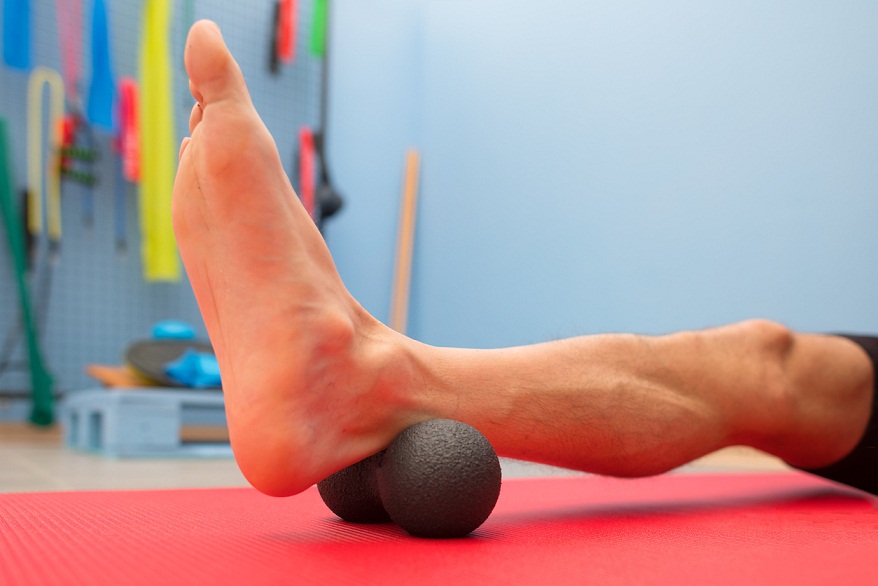No matter how many kilometers you’ve got under your belt (or on your running shoes), you’re always going to need to stay on top of muscle, ligament, and joint training to ensure you’re staying in peak condition.
It’s not just about your personal bests, fastest times, or the longest distances. It’s also about staying healthy and maintaining a balance in your body.
That being said, are you properly training your fascia?
We’re sure you’ve heard the term “fascia” before, whether it was in your runner’s circle or in your 10th grade biology class. But, if you don’t know specifically what it is and how it affects your body and your running, then you’re in danger of injury.
We’re here to decode some of the complicated issues that come with understanding fascia. We’ll break down what it is and why it matters, discuss the benefits of training your fascia, and try to give you a better understanding of why it’s so important to train your fascia, especially if you’re an avid runner.
Read on to get a better understanding of how you can train your fascia, stay healthy, and improve your running game.
What is Fascia?

Before you can understand why you should train your fascia, you have to understand what it is. Fascia is a fancy word for connective tissue, and can be thought of as a band, or sheet of connective tissue that lives underneath your skin. Fascia has numerous functions – it separates your muscles, keeps some internal organs separate from others, and stabilizes and encloses parts of your body for protection.
Your fascia is inherently flexible and is designed with wavy patterns of collagen fibers. It has four primary functions: it moves, it shapes, it communicates, and it supports. All four jobs play significant roles in your body, in mobility, perception, and possibly most importantly, in the prevention of injuries.
Still a touch confused about fascia? Think about a piece of citrus-y fruit, like an orange, a clementine, or a grapefruit. When you slice into it, you see a web of fine, white fibers that help keep the fruit to shape and hold all the juices inside. That’s similar to how fascia works.
Why is Fascia Important and Why Should Runners Train It?
Every part of your musculature and skeleton relies on fascia in some way. Remember those four functions we discussed earlier? The fascia helps to shape, move, communicate, and support parts of your body.
But fascia is also considered the largest sensory organ, not only because it covers more area than your skin, but also because many sensors for movement, position, tension, pressure, and pain are directly located within your fascia.
So why should you, an avid runner care about your fascia and why should you focus on fascia training? Let’s break it down.
Fascia is pretty tricky business. It’s so expansive and so intertwined that it resists the normal, medical standards of being cut up and named for illustrations in textbooks. All that to say, fascia is hard to study and hard to explain. For a majority of medical history, doctors and scholars assumed that fascia was just the packaging in our bodies, when in fact, it’s a major structure that we need to strengthen, train, and monitor.

As a runner, you always make sure you’re stretched out before you go out for a jog, right? You probably even do some accessory exercises to ensure that your body is in tip-top shape for running. If you didn’t, you’d risk injury.
Fascia requires the same type of care. If you’re not training your fascia, you’re not preparing your body to warm up properly and you’re not keeping it active for healing purposes. Ignoring your fascia and not training it can lead to serious injuries – especially if you’re a runner.
Here’s another example. Give your sock a pull. Notice what happens? You pull one part of the sock, but the entire sock moves in response. The bottom tightens on your toes, the rest of the fabric bunches up, et cetera. But when you let it go, everything snaps back into its place, right?
Fascia works in a similar fashion. When fascia is healthy and has been trained as it should be, it will be smooth, supple, and most importantly, flexible. It will allow you to move freely, maintain optimal flexibility while keeping its shape, and keep its texture.
Inactivity for your fascia can mean disaster. If you’re not training it, inactivity can cement those flexy-fibers into place, forming unhelpful, solid patterns that aren’t flexible and won’t move around.
Any disruption of these cemented-patterns can result in painful injury. So, if you’re not caring for your fascia but continue to run a few miles every day, you’re running the risk of injuring yourself.
How To Train Your Fascia
Training fascia is so important – especially for runners who are constantly using their muscles, staying active, and risking injury. Taking care of and training your fascia isn’t particularly difficult, either.
Here are a few easy ways to train your fascia. Either schedule a separate time for your fascial training or incorporate it in your regular routine.
Stay Active and Hydrated
As a runner, you’ve probably got this part pretty well covered. Staying active and on the move is incredibly important when dealing with the health of your fascia. Over time, sticky adhesions form between your fascial surfaces, and if they’re not regularly moved, they can stick together enough to inhibit your range of motion.
Additionally, your fascia is composed primarily of water, so hydrating consistently can significantly help.
Flexibility Is Everything
Because your fascia extends through your whole body in chains, it’s important every chain is getting enough stretch and flex. We recommend doing whole-body stretches to properly engage your fascia before any activity.
It’s also important to work on dynamic moves that integrate rebound elasticity. Think of exercise like knee-highs and butt-kickers. These are perfect dynamic exercises to include in your flexible fascia training.
Fascial Release Tools

Fascial release with special tools is one of the best ways to train your fascia, but it can also be the most daunting. Fascial release is simply some kind of self-massage that you do with a tool like a tennis ball, rubber ball, or a foam roller.
Fascial release, and the tools you use to do it, are endlessly important to your fascial health. Using a foam roller, you can target trigger points and roll out sore areas, improve your mobility, help your soft tissue regenerate quicker, and even enhance your performance.
Our Final Fascia Thoughts
When it comes to your fascia, you can’t be too careful, especially as a runner. As we’ve noted, fascia is spread throughout your entire body in special chains, and as a runner, you enact your entire body in your sport.
Ensuring that you’re properly training and caring for your fascia will not only protect you from any running related injuries, but also, is likely to improve your running game altogether.

